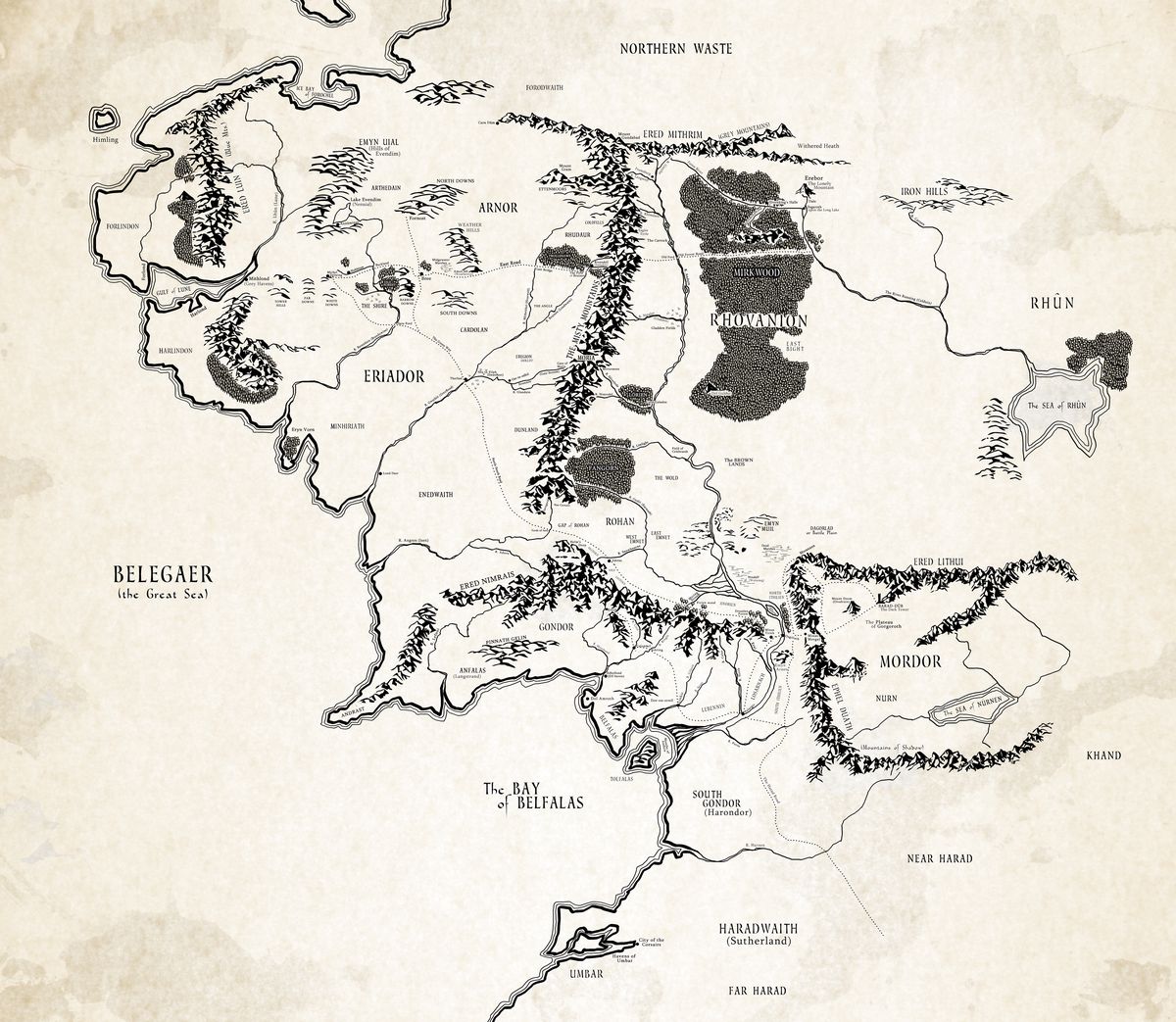J.R.R. Tolkien didn’t just love maps — he ascribed the entire world-building success of The Hobbit and The Lord of the Rings to his cartographical exercises. And it’s no surprise that the new Amazon series The Lord of the Rings: The Rings of Power honors Tolkien’s achievement in rendering Middle-earth in map form.
In a 1954 letter to his friend and fellow author Naomi Mitchison, Tolkien wrote, “I wisely started [The Lord of the Rings] with a map, and made the story fit (generally with meticulous care for distances).” In his mind, reverse-engineering a fantasy world “lands one in confusions and impossibilities,” and that charting every square inch of Middle-earth was essential to wrapping his mind around the intricacies of the story. In the same breath, he also apologized to Mitchison for sending the books along without the drawings.
“I am sorry about the Geography,” he wrote. “It must have been dreadfully difficult without a map or maps.”
Tolkien’s work was map-worthy, and the tradition of kicking off or capping a fantasy book with a map remains standard operating procedure for genre publishers. But the illustrated works rarely carry over to adaptations. The Lord of the Rings: The Rings of Power is an exception to a point; as the first two episodes jump around Middle-earth to introduce us to new elves, dwarves, humans, harfoots, and others, the action occasionally cuts away to the same designs Tolkien drew from as he pieced together Frodo’s story. It’s such a thrill to see the dang map on screen that I was left wanting to see the full thing. So here it is.
Image: Prime Video
A few key locations emerge in the opening two episodes of Rings of Power, including Forodwaith, where Galadriel is hunting down clues of an lingering evil; Rhovanion, home to the hobbit-like harfoots; and the Eregion region, where one can find the dwarven kingdom of Khazad-dûm tucked away underneath a mountain range. In Rings of Power, the camera swoops over sections of this map like an Indiana Jones movie might. But the full picture gives viewers a greater sense of distance — just as Tolkien intended. Amazon even created an interactive version of this map in order to let you do your own swooping.
Fans of the Lord of the Rings movie trilogy might be a bit mystified by how the map of the Second Age lines up with more familiar locations like The Shire, the Mines of Moria, and Mordor. Luckily, we have another map, courtesy of The LOTR Project.

Image: LOTR Project
Lifted from J.R.R. Tolkien’s sketches (and Christopher Tolkien’s more mathematically proficient graph-paper drafts), LOTR Project’s maps connect the landform dots between Middle-earth’s past and distant past. An interactive version of the above, as you can imagine, is an absolute delight.
A map is a story, inherently created through vision and conveyed to anyone who may take it on their journey. The Lord of the Rings: The Rings of Power gets that more than most fantasy adaptations, building it right into the visuals. But of course, on TV, the resource can only go so far. So take these maps and venture forth. Tolkien knew his brilliant pal Naomi needed them, and so would you.

